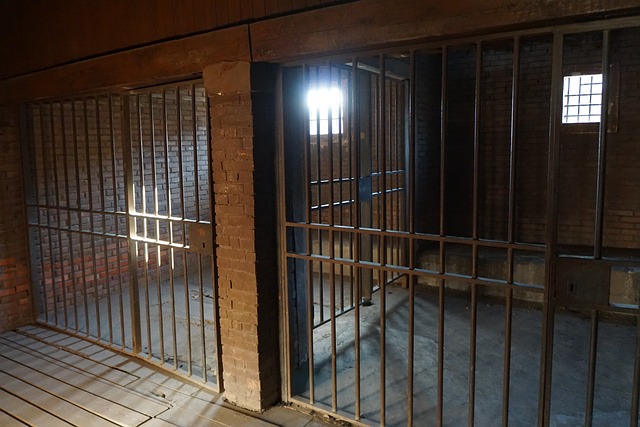Rural and urban areas face distinct DUI challenges. Rural communities prioritize harsh penalties due to limited support groups, while urban areas focus on rehabilitation through specialized services and creative solutions. Disparities in access to Support Groups for DUI Offenders impact sentencing, with rural areas facing higher recidivism rates and limited options. Urban centers offer extensive peer-to-peer and professional guidance, enhancing chances of successful long-term recovery. Rural defendants leverage local community groups for defense, while urban defenders benefit from specialized legal strategies tailored to diverse cultural backgrounds and anonymous protection.
In the vast divide between rural and urban settings, DUI laws and their implications vary significantly. Understanding these differences is crucial for both offenders and legal professionals. This article delves into the key distinctions between rural and urban DUI regulations, exploring their impact on sentencing, rehabilitation through support groups, access to community resources, and unique defense strategies. By examining these factors, we uncover how location shapes the experiences of those facing drunk driving charges.
- Understanding Rural and Urban DUI Laws: Key Differences
- Impact on Sentencing: Rural vs Urban Bias?
- Access to Support Groups: Location's Role in DUI Offenders' Rehabilitation
- Community Resources: What Sets Rural and Urban Areas Apart
- Defense Strategies: Tailoring Approaches Based on Setting
Understanding Rural and Urban DUI Laws: Key Differences

In the realm of DUI (Driving Under the Influence) laws, a significant distinction arises between rural and urban settings. Rural areas, characterized by lower population densities and more open spaces, often have different legal frameworks compared to urban centers. One notable difference is the emphasis on public safety measures. In rural communities, where support groups for DUI offenders might be less readily available, law enforcement may take a more stringent approach to deterring and punishing DUI offenses. This can include harsher penalties and stricter license suspensions to discourage drivers from endangering themselves and others on less congested roads.
In contrast, urban areas typically grapple with the challenge of managing heavy traffic and a higher density of potential DUI offenders. As such, their DUI laws may focus more on rehabilitation and support services, including specialized groups that cater to the unique needs of urban drivers facing substance abuse issues. These cities often implement creative solutions like designated driver programs, public transit alternatives, and educational campaigns to reduce DUI incidents without solely relying on punitive measures.
Impact on Sentencing: Rural vs Urban Bias?

In the realm of DUI (Drunk Driving Under Influence) laws, a notable difference emerges between rural and urban settings, potentially leading to disparities in sentencing. Rural areas, often characterized by lower population densities, may have less stringent legal resources and support systems compared to urban centers. This can impact how DUI cases are handled, with potential biases creeping into the justice system. For instance, in rural courts, there might be fewer specialized prosecutors or judges trained in DUI law, potentially resulting in less consistent sentencing practices.
Moreover, access to support groups for DUI offenders could vary significantly between these regions. Urban areas typically boast a wealth of resources, including well-established 12-step programs and counseling services, easily accessible to those facing DUI charges. Conversely, rural communities might struggle to offer such comprehensive support networks, leaving defendants without adequate resources for rehabilitation and reintegration after serving their sentences. This disparity could contribute to higher recidivism rates in rural areas, further complicating the already nuanced landscape of DUI sentencing.
Access to Support Groups: Location's Role in DUI Offenders' Rehabilitation

Access to support groups plays a pivotal role in the rehabilitation process for DUI offenders, with location significantly influencing their path to recovery. Rural areas often present unique challenges, characterized by limited resources and fewer specialized services. In such settings, individuals facing DUI charges might struggle to find nearby support groups or therapy sessions tailored to address alcohol-related issues. This can hinder their progress and increase the risk of relapse.
Conversely, urban centers typically boast a more extensive network of support systems. Diverse communities in these regions often foster numerous support groups for DUI offenders, offering peer-to-peer connections and professional guidance. Greater accessibility to resources facilitates a more comprehensive rehabilitation process, enhancing the likelihood of successful long-term recovery for those convicted of DUI offenses.
Community Resources: What Sets Rural and Urban Areas Apart

In rural areas, community resources tend to be less abundant compared to urban centers. This disparity can significantly impact individuals facing DUI charges. While urban regions often boast a wide array of support systems, including specialized legal services and numerous support groups for DUI offenders, rural communities may offer limited options. The lack of readily available resources can make it more challenging for those in rural areas to access the necessary tools for rehabilitation and recovery after a DUI incident.
The sparse population density in rural settings often means that local governments have less funding to dedicate to social programs. As a result, services like counseling sessions, educational workshops, and peer support groups, crucial for helping DUI offenders reintegrate into society, may be scarce or inconsistently available. In contrast, urban areas benefit from higher populations and diverse cultural backgrounds, which often translate to more robust community networks and resources tailored to address specific needs, including those related to DUI rehabilitation.
Defense Strategies: Tailoring Approaches Based on Setting

In rural areas, where communities are smaller and more tight-knit, defense strategies for DUI (drunk driving) cases often involve a different approach compared to urban settings. One key difference is the availability and accessibility of support groups for DUI offenders. Rural defendants might find it easier to connect with local community-based programs that offer counseling and rehabilitation services, which can be powerful tools in presenting a robust defense by showcasing a commitment to personal growth and accountability. These support groups can provide a sense of camaraderie and understanding, often resulting in more favorable outcomes, including reduced sentences and less stringent licensing restrictions.
In contrast, urban areas typically boast a wider array of specialized legal services and advocacy groups focused on DUI cases. Here, defense attorneys may emphasize the client’s right to privacy and leverage urban populations’ diverse cultural backgrounds to craft unique defenses. Urban defendants might benefit from access to cutting-edge legal strategies and innovative approaches, ensuring their rights are protected in a more anonymous and fast-paced environment. This urban landscape also often includes more robust data on DUI trends, which can inform strategic decisions tailored to specific cities or neighborhoods.
In understanding the nuances of rural vs. urban DUI laws, it becomes evident that location significantly impacts sentencing, access to resources, and rehabilitation outcomes for offenders. Rural areas often face challenges in providing extensive community resources, while urban centers boast a wider array of support groups and treatment options. This disparity highlights the need for tailored defense strategies that consider the specific legal landscape and available support systems of each region. By focusing on these differences, attorneys can better advocate for their clients, ensuring fair outcomes for DUI offenders across various settings. Moreover, recognizing these disparities encourages policymakers to address potential biases in sentencing and enhance access to effective rehabilitation programs, ultimately contributing to safer communities.






